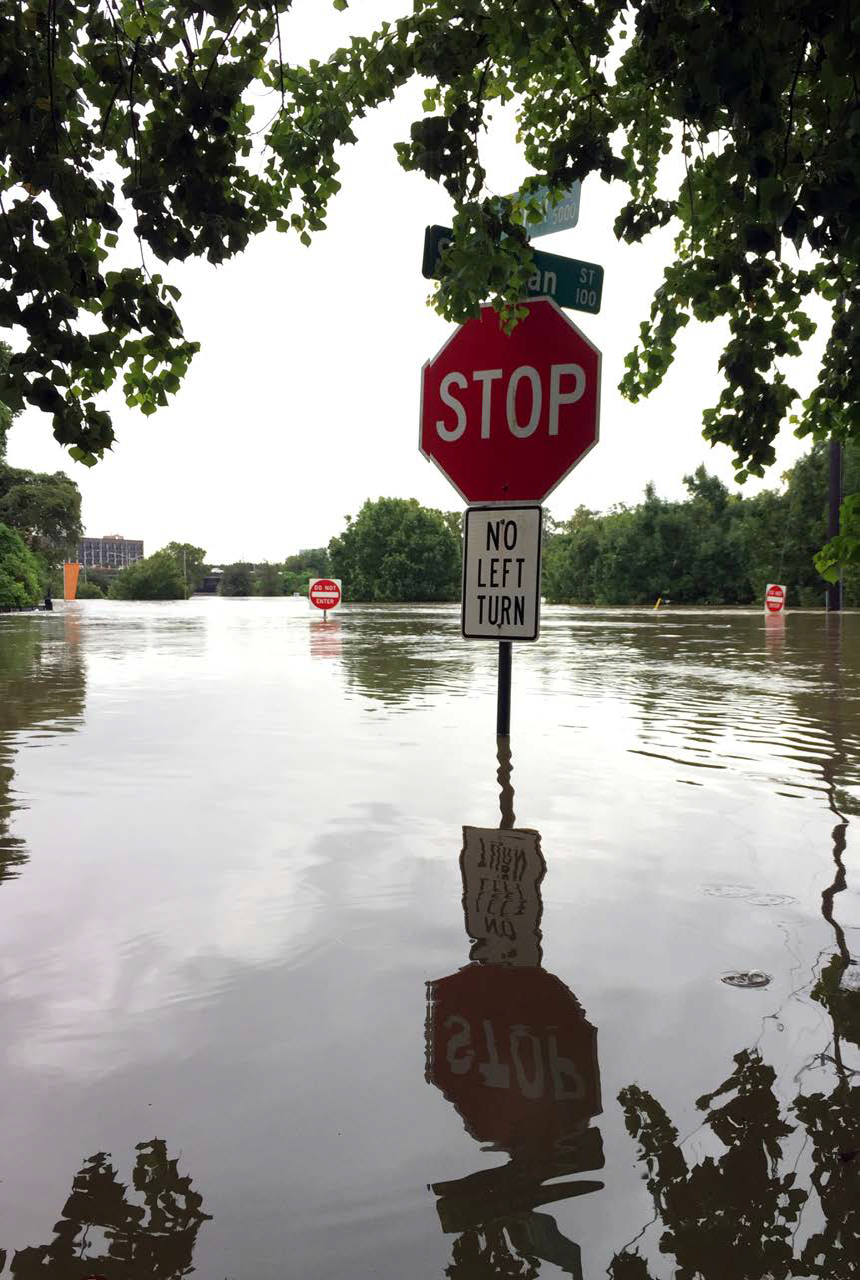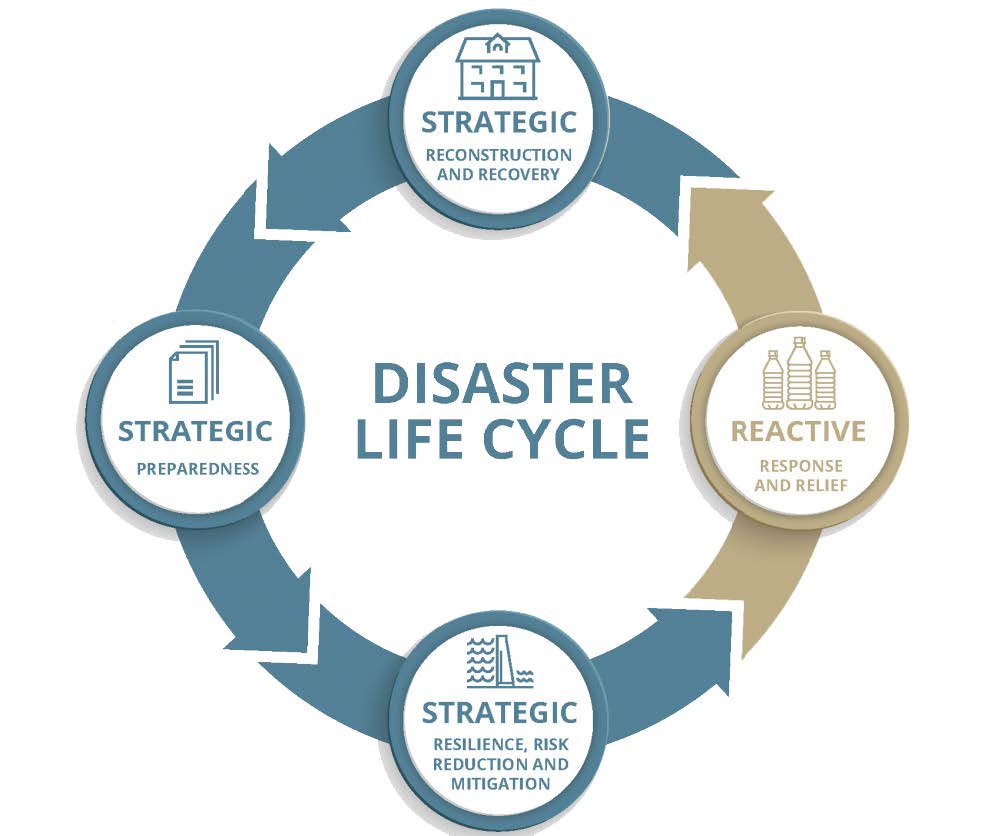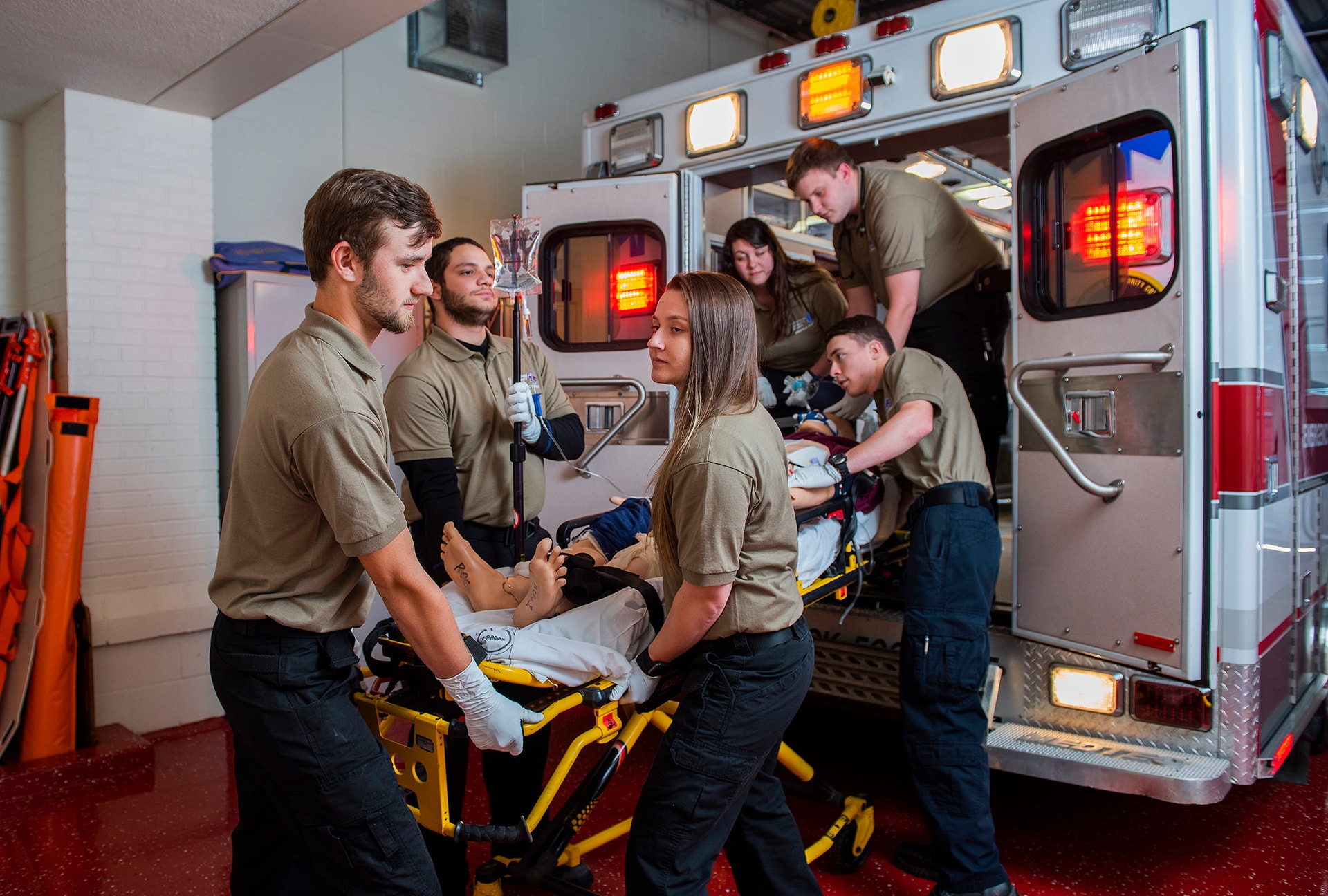PIEDMONT TRIAD REGION
ECONOMIC RESILIENCE
Historically, when natural disasters and disaster recovery efforts are addressed, it is right after a community and region has fallen victim to or is vulnerable to a disaster. Challenging and redefining our strategy of disaster recovery and economic resilience provide ongoing guidance to increase resiliency and sustainability across the region. We no longer react to, but act on disasters. Susceptible populations such as the economically depressed, elderly, chronically ill, or disabled are adversely targeted by and often suffer the greatest from disasters due to being less prepared. Economic and climatic shocks possess different severity and devastation levels, such as natural disasters, unstable stock market fluctuations leading to recessions, government shutdowns, supply shortages, limited funding for grants, and terrorist attacks. All types of shocks must be accounted for and considered when planning out the corrective course of action for each shock. The Piedmont Triad Regional Council collaborates and coordinates with various emergency management stakeholders in the region to ensure hazard and risk vulnerabilities are considered and planned for, mitigated against if possible, and preparedness plans are in place and practiced for efficient response.
The implementation of economic resiliency is still a novel process and initiative. This implementation requires strong regional partnerships and bold leadership to achieve the CEDS vision of increasing capacity to endure economic and climatic shocks through a diversified, collaborative, and accommodating economy. The following stakeholders are key partners across the public and private institutional sphere with dedicated time and energy for outlining a smooth execution of regional information networks, performance measures, and recovery planning.


Stakeholders include:
NC Department of Public Safety, NC Office of Recovery and Resiliency, NC Department of Environmental Quality, NC Rural Center, NC Commerce, NC Division of Public Health and County Environmental Health Departments, Private Businesses, Financial Lenders, Local Governments, Social Services Agencies, Anchor Educational Institutions, Community Colleges, Main Street initiatives, Local Chamber of Commerce, Economic Development Organizations, Utility providers, Housing Authorities, and Non-Profits.
Strategic Resiliency Information Networks, Recovery Planning, and Performance Measurement
The succeeding foundational actions are vital to proactively planning for economic and climatic shocks by focusing on strengthening recovery methods to support a more resilient economy. The action items are organized by information network development for natural disasters and economic shocks, investing in rural communities due to those populations being more vulnerable, and best practices and performance measures to accurately capture preparedness for sustaining economic resiliency.
Information Network Strategies
- Tailor regional planning efforts with local Pre-Disaster Mitigation Plans, Emergency Management teams and firms, The Piedmont Triad Regional Council, and the NC Climate Risk Assessment and Resiliency Plan to expand local and regional preparedness, mitigation, and risk reduction.
- Collaborate with local government leaders on the importance of effective land use planning, zoning code updates, incentive programs, and infrastructure needs to include disaster-specific and green/climate-resilient structures.
- Facilitate opportunities and exercises for emergency management personnel, local planners, and stakeholders to regularly engage best practices.
- Educate elected leaders, staff, and community members on the significance of recovery planning and mitigation of disasters and economic hardships.
- Monitor supply chain disruptions and alternative solutions within the region, much like what arose from COVID, to enhance preparation for future interruptions.
- Establish an equity-driven framework to ignite inclusive decision-making regarding economic growth, mobility, and recovery strategies for marginalized populations and business districts.
Recovery Planning
-
Expand technical assistance opportunities within our rural counties to build capacity and progress the NC Rural Center’s “Rural Counts” initiative.
-
Strategize methods to best support and encourage all residents and families to remain within or relocate back to the region, especially rural communities, pre and post disaster/economic shocks.
-
Highlight opportunities within and boost local community assets for a sense of Piedmont Triad pride and regional brand loyalty.
-
Promote business services and supportive assistance for the region to stimulate growth for future sustainability and community vitality.


Performance Measures
- Scheduling and monitoring collaboration events and discussion forums for emergency management leaders, local/regional planners, and stakeholders.
- Eagerly support and apply for green infrastructure incentives within redevelopment and new development efforts.
- Establish database and reporting systems to capture natural disaster patterns and market fluctuations resulting in economic loss.
- Remain updated on status of utility systems connections and rehabilitation of inadequate infrastructure, especially within rural counties and areas of underserved populations.
- Examine population, migration, and economic mobility trends to highlight areas of most to least vulnerability.
- Identify studies and reports focusing on and outlining supply chain disturbances and proposed solutions to combat disruptions.
Strategic Reconstruction and Recovery
Recovery efforts can be categorized into two periods of time; short-term and long-term. While the recovery plans will be uniquely defined based on the type of hazard or incident that occurs, the process and priorities remain the same; conduct a damage assessment, minimizing loss, managing resources, smart and resilient rebuilding, human services, continuity of operations, the reestablishment of utility services, temporary assistance for housing, economic assistance, and public information.
Recovery plans should include the critical infrastructure and vital resources to the community. Restoration of critical utilities may be the only thing needed for communities to begin internal rebuilding and recovery. Long-term recovery planning includes redevelopment, restoration, and comprehensive plans to restore the economy to a new normal. A new normal is defined as
building back with resiliency included so as to reduce similar impacts in the future from similar threats. Following individual and public assistance damage assessments, local governments and involve state and federal agencies to determine the extent of need and financial shock to the com63 munity. Local governments may choose to impose or relax building code ordinances to encourage resilient rebuilding. The actions contained within redevelopment plans for each county should be prioritized based on community input. Tactics will change with each incident, so there should be in place a system for assessing and prioritizing recovery efforts in order to ensure that the most pressing issues are addressed first. There should be a detailed procurement plan in place that sources local suppliers and providers in the immediate aftermath of an incident, but especially a natural/manmade disaster.
Supply routes, highways, and airports could be shut down, so there should be local suppliers identified prior to a disaster occurring. In addition, the procurement of goods and services should be conducted in accordance with standards that allow for FEMA reimbursement; therefore, the procurement team should have a working knowledge and understanding of FEMA procurement standards. There should also be a list of resources prepared and made generally available to the public that outlines who to call for support during times of disaster.
Assessment and Improvement
A vital component of any action plan is to assess the effectiveness of the plan. Disaster Recovery and Economic Resiliency is an ongoing effort. While incidents occur infrequently and are almost always unexpected, there are ways to assess recovery and resiliency plans in the absence of an actual incident. One way to assess the plan absent an incident is to conduct table-top exercises. The goal would be to have business and industry leaders, county and local leaders, and state emergency management personnel participate in these table-top exercises to assess the strength and weaknesses of the recovery and resiliency plan. Following the exercise, officials should correct the plan where possible and acknowledge any potential shortcomings. Assessments should occur during and after an incident. What parts of the plan were helpful for this incident? What parts of the plan were not helpful? How can the plan be improved based upon the region’s ability to withstand or avoid the incident’s shock? With a constructive critical analysis of lessons learned, the plan can be improved after every table-top exercise and every incident.
A Return to a New Normal
Following the immediate recovery period, the regional partners should return to a new normal initiative in order to resume the long-term efforts to diversify, strengthen, and develop a more adaptable economy. Efforts should be prioritized based on the incident but should include local business outreach to update the local business inventory. More than 50% of businesses do not reopen after a disaster. The region’s ability to work toward a new normal will be measured by the economy, retained population, and amount of businesses that survive an incident, as well as the ability to adapt to the new normal following an incident with a rebuilt economy.
The regional council’s objective in disaster recovery and resiliency is to support and assist its members, stakeholders, and communities in preparing, planning, and recovering from an incident’s shock that could have detrimental effects on the sustainability of the population, economy, and community.
The regional council builds collaboration and promotes coordination among local, state, and federal stakeholders to plan for disasters, build continuity plans, develop recovery plans, and take mitigation and sustainment steps to ensure community and economic resiliency.
